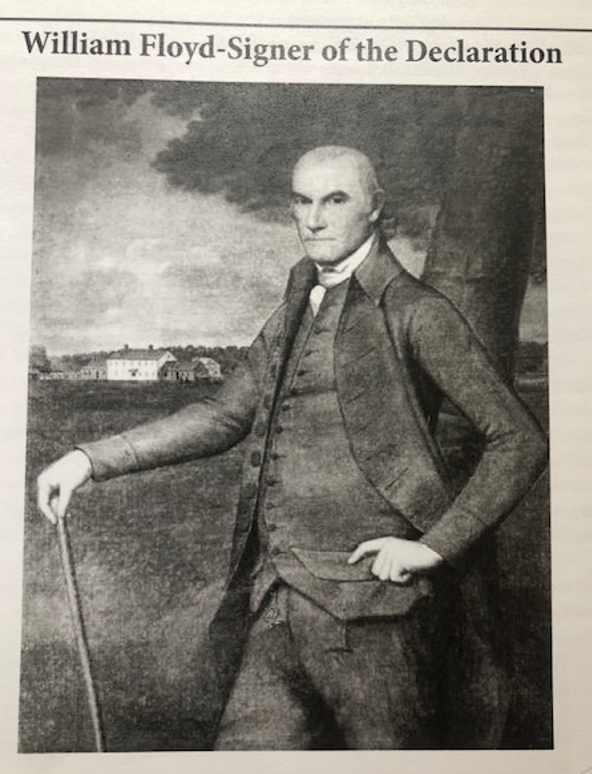Upon the death of his parents in 1755, Floyd inherited the family’s 4,400-acre plantation and took on the responsibility of running the plantation and raising his six younger siblings.
He became active in local politics and was appointed to represent New York at both the 1st and 2nd Continental Congress and served until the end of the war. On August 2, 1776, Floyd signed his name on the Declaration of Independence. He was the first of the four New Yorkers to sign, the youngest of the four and the only representative from Suffolk County, Long Island.
In late August of 1776, the British drove the Americans back to Brooklyn Heights in the largest battle of the Revolutionary War. Neither he nor his family was safe on Long Island, so they fled to Connecticut for the duration of the war. Floyd continued his work in politics, but he and his children (his wife had died in Connecticut) did not return to Mastic until the Treaty of Paris was signed in 1783.
In 1787, Floyd was promoted to Major General in the New York State Militia. He served several terms in the State Senate and was a State Representative to the First United States Congress from 1789–1791. In 1803, he gave the lands in Mastic to his only son Nicoll and moved to upstate New York with his wife and younger daughters. There he built a house that is a mirror image of the one on Long Island. Both houses are still standing today.


